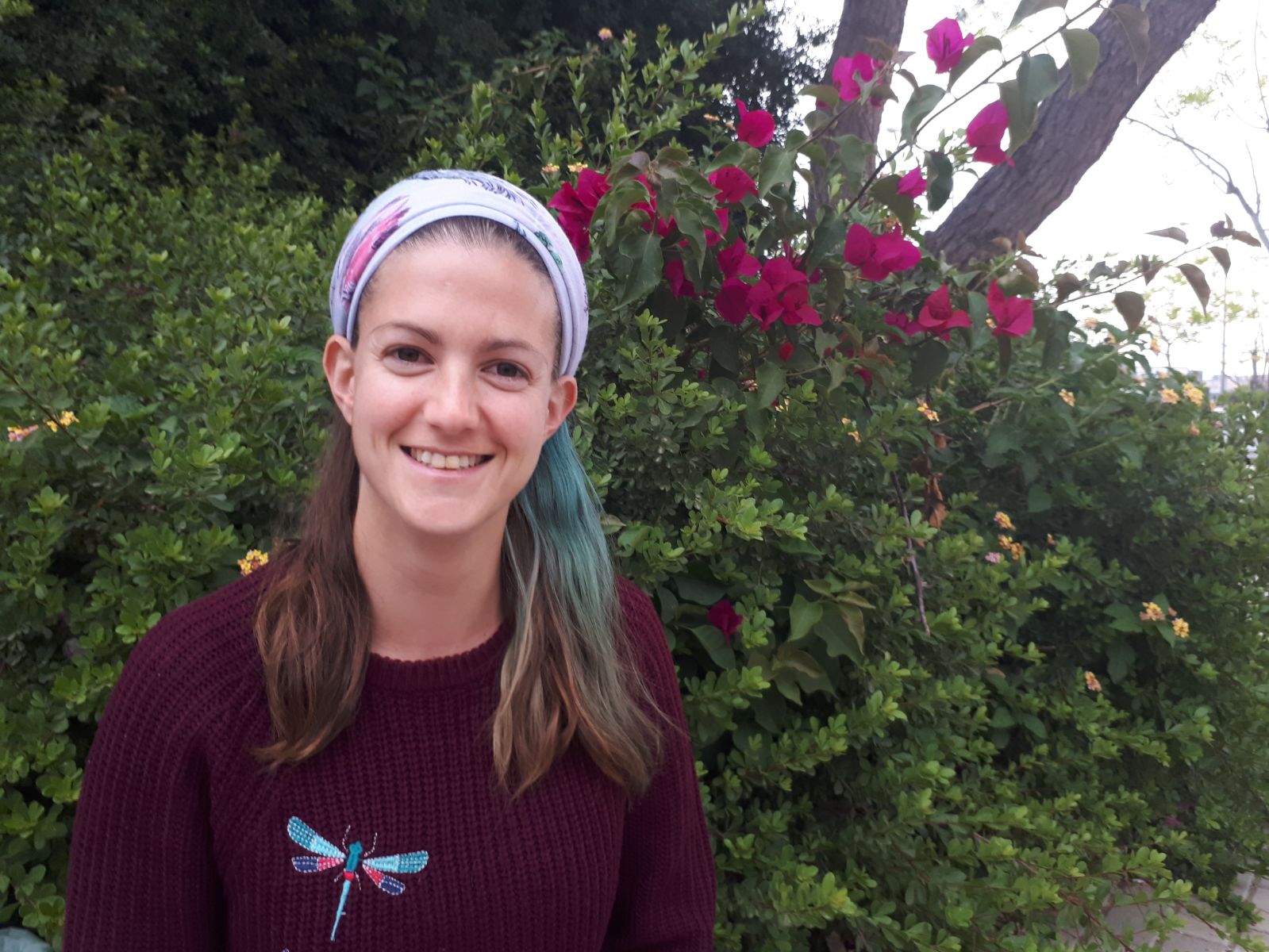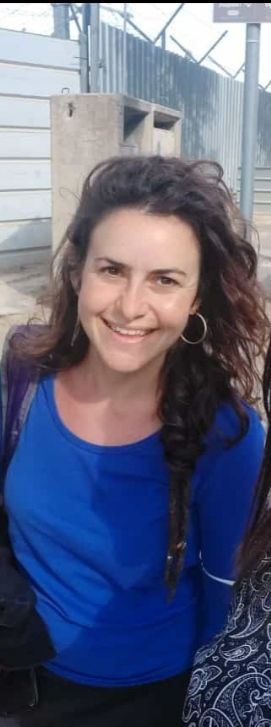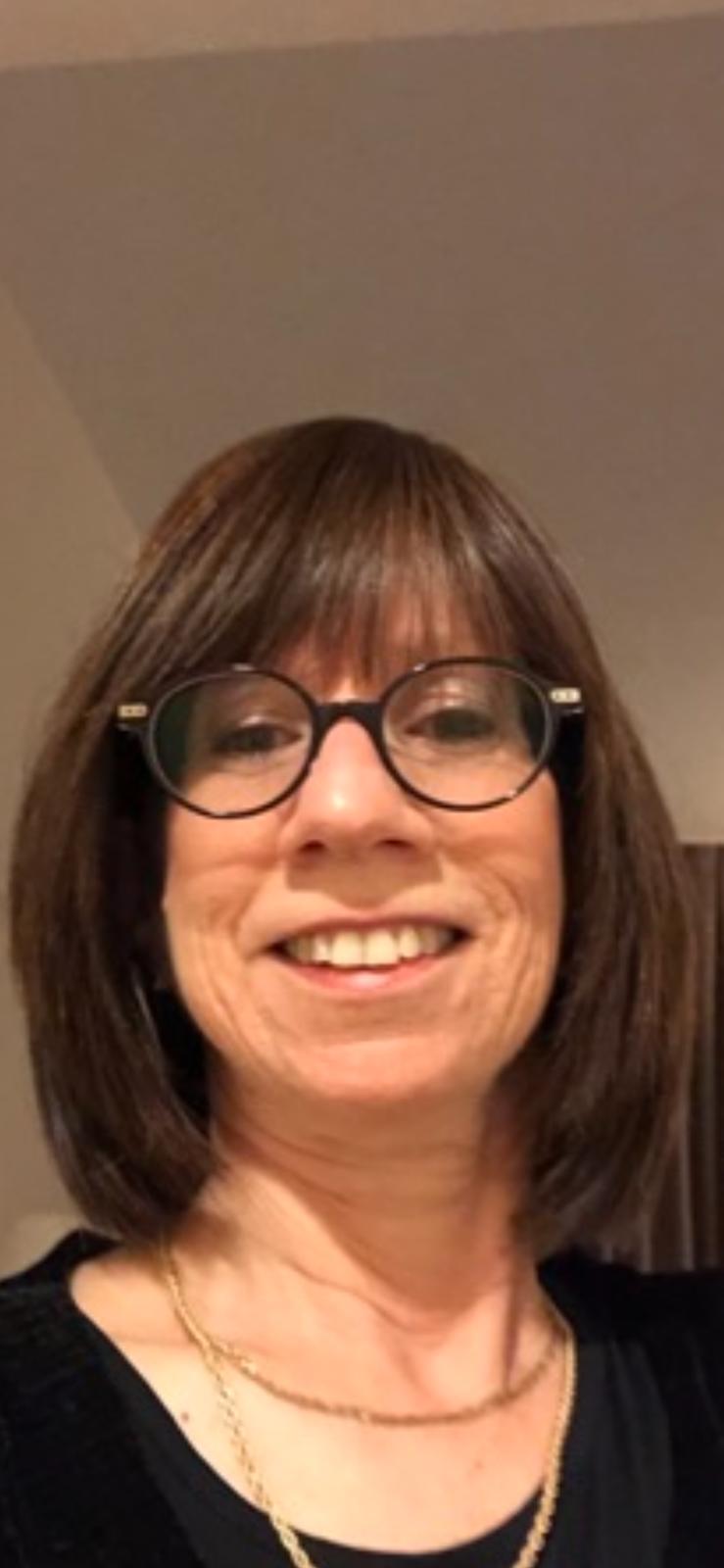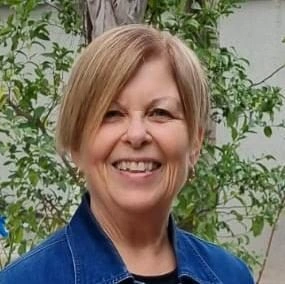שבת צו
הָא בְּרַבְרְבֵי, וְהָא בְּזוּטְרֵי. אָמַר רַב אַסִּי, שׁוֹנִין: כְּלֵי חֶרֶס שִׁיעוּרוֹ בְּכוֹנֵס מַשְׁקֶה. וְלֹא אָמְרוּ מוֹצִיא מַשְׁקֶה אֶלָּא לְעִנְיַן גִּיסְטְרָא בִּלְבַד. מַאי טַעְמָא? אָמַר מָר זוּטְרָא בְּרֵיהּ דְּרַב נַחְמָן: לְפִי, שֶׁאֵין אוֹמְרִים ״הָבֵא גִּיסְטְרָא לְגִיסְטְרָא״.
This statement, that a hole must be large enough to enable a pomegranate to go out in order to purify the vessel, is referring to large vessels. And this statement, that teaches that a vessel is purified only when the majority of the vessel is broken, is referring to small vessels. Rav Asi said that they teach this halakha: With regard to an earthenware vessel, the measure of the hole that renders it unable to become ritually impure is large enough to enable liquid to enter it. And they only said: The measure of a small hole from which liquid seeps, with regard to the impurity of a shard [gistera]. The Gemara asks: What is the reason for this? The Gemara answers that Mar Zutra, son of Rav Naḥman, said: A shard is used as a plate beneath a perforated earthenware vessel. If the shard is also perforated and leaks, it is no longer of any use. Because one does not say: Bring another shard to seal the leak of a shard, but throws it out immediately.
אָמַר עוּלָּא: פְּלִיגִי בַּהּ תְּרֵי אָמוֹרָאֵי בְּמַעְרְבָא, רַבִּי יוֹסֵי בְּרַבִּי אָבִין וְרַבִּי יוֹסֵי בַּר זַבְדָּא. חַד אָמַר כְּמוֹצִיא רִמּוֹן, וְחַד אָמַר: כְּשׁוֹרֶשׁ קָטָן. וְסִימָנָיךְ, אֶחָד הַמַּרְבֶּה וְאֶחָד הַמַּמְעִיט. אָמַר רַב חִינָּנָא בַּר כָּהֲנָא מִשְּׁמֵיהּ דְּרַבִּי אֱלִיעֶזֶר: כְּלִי חֶרֶס שִׁיעוּרוֹ כְּמוֹצִיא זֵיתִים. וּמָר קַשִּׁישָׁא בְּרֵיהּ דְּרַבָּה מְסַיֵּים בַּהּ מִשְּׁמֵיהּ דְּרַבִּי אֱלִיעֶזֶר: וַהֲרֵי הֵן כִּכְלֵי גְלָלִים וּכְלֵי אֲבָנִים וּכְלֵי אֲדָמָה — שֶׁאֵין מְקַבְּלִין טוּמְאָה לֹא מִדִּבְרֵי תוֹרָה וְלֹא מִדִּבְרֵי סוֹפְרִים. וּלְעִנְיַן צָמִיד פָּתִיל, עַד שֶׁיִּפְחַת רוּבּוֹ.
Ulla said: Two amora’im in the West, Eretz Yisrael, disagree about this topic: They are Rabbi Yosei, son of Rabbi Avin, and Rabbi Yosei bar Zavda. One said: The measure of a hole that purifies an earthenware vessel is large enough to enable a pomegranate to go out. And one said: The size of a small root. And your mnemonic to remember that neither holds that the measure is size of an olive is the expression: Both one who increases and one who decreases. They hold extreme positions in this dispute and eschew the intermediate position. Rav Ḥinnana bar Kahana said an intermediate position in the name of Rabbi Eliezer: An earthenware vessel becomes ritually pure with a hole large enough to enable olives to go out. And Mar Kashisha, son of Rabba, concluded this halakha in the name of Rabbi Eliezer: And vessels that have been perforated are like dung vessels, and so too, stone vessels and earth vessels that were not baked in a kiln, which neither become impure by Torah law nor by rabbinic law. And, as far as the matter of an earthenware vessel with a sealed cover in a room with a corpse, it maintains its impurity until the majority of it is broken.
הדרן עלך המצניע
מַתְנִי׳ הַזּוֹרֵק מֵרְשׁוּת הַיָּחִיד לִרְשׁוּת הָרַבִּים, מֵרְשׁוּת הָרַבִּים לִרְשׁוּת הַיָּחִיד — חַיָּיב. מֵרְשׁוּת הַיָּחִיד לִרְשׁוּת הַיָּחִיד וּרְשׁוּת הָרַבִּים בָּאֶמְצַע — רַבִּי עֲקִיבָא מְחַיֵּיב, וַחֲכָמִים פּוֹטְרִין.
MISHNA: One who throws an object on Shabbat from the private domain to the public domain or from the public domain to the private domain is liable. However, one who throws an object from the private domain to the other private domain, and the object passes through the public domain between the two, Rabbi Akiva deems him liable for carrying into the public domain, and the Rabbis deem him exempt.
כֵּיצַד? שְׁתֵּי גְזוּזְטְרָאוֹת זוֹ כְּנֶגֶד זוֹ בִּרְשׁוּת הָרַבִּים, הַמּוֹשִׁיט וְהַזּוֹרֵק מִזּוֹ לָזוֹ — פָּטוּר, הָיוּ שְׁתֵּיהֶן בִּדְיוֹטָא אַחַת — הַמּוֹשִׁיט חַיָּיב וְהַזּוֹרֵק פָּטוּר, שֶׁכָּךְ הָיְתָה עֲבוֹדַת הַלְוִיִּם.
How so? If there are two balconies [gezuztra’ot] that are private domains opposite each other on either side of the public domain, one who passes or throws an object from the one on this side to the one on that side is exempt. However, if the balconies were on the same level on the same side of the public thoroughfare, and the public domain separated the two, one who passes from one to the other is liable, and one who throws is exempt, as that method, passing, was the service of the Levites who carried the beams of the Tabernacle.
שְׁתֵּי עֲגָלוֹת זוֹ אַחַר זוֹ בִּרְשׁוּת הָרַבִּים, מוֹשִׁיטִין הַקְּרָשִׁים מִזּוֹ לָזוֹ, אֲבָל לֹא זוֹרְקִין.
In the Tabernacle, two wagons along the same level stood behind one another in the public domain, and the Levites passed the beams from one wagon to the other through the public domain on the same side of a thoroughfare. But they did not throw from one wagon to another because the beams were heavy. Passing, which was performed in the Tabernacle, is prohibited. Throwing, which was not performed in the Tabernacle, is not prohibited.
גְּמָ׳ מִכְּדֵי זְרִיקָה תּוֹלָדָה דְהוֹצָאָה הִיא, הוֹצָאָה גּוּפַהּ הֵיכָא כְּתִיבָא? אָמַר רַבִּי יוֹחָנָן, דְּאָמַר קְרָא: ״וַיְצַו מֹשֶׁה וַיַּעֲבִירוּ קוֹל בַּמַּחֲנֶה״, מֹשֶׁה הֵיכָן הֲוָה יָתֵיב? — בְּמַחֲנֵה לְוִיָּה, וּמַחֲנֵה לְוִיָּה רְשׁוּת הָרַבִּים הֲוַאי, וְקָאֲמַר לְהוּ לְיִשְׂרָאֵל: לָא תַּפִּיקוּ וְתַיְתוֹ מֵרְשׁוּת הַיָּחִיד דִּידְכוּ לִרְשׁוּת הָרַבִּים.
GEMARA: With regard to the main issue, the Gemara asks: After all, throwing is a subcategory of carrying out. Where is the primary category of prohibited labor of carrying out itself written in the Torah? Isn’t it necessary to clarify the primary category before discussing the subcategory? Rabbi Yoḥanan said: As the verse said: “And Moses commanded, and they passed a proclamation throughout the camp saying: Neither man nor woman should perform any more work to contribute to the Sanctuary; and the people stopped bringing” (Exodus 36:6). According to Rabbi Yoḥanan, Moses commanded the people to cease bringing contributions in order to prevent them from bringing their contributions on Shabbat. He then explains: Where was Moses sitting? He was in the camp of the Levites, and the Levites’ camp was the public domain. And he said to Israel: Do not carry out and bring objects from the private domain, your camp, to the public domain, the camp of the Levites.
וּמִמַּאי דִּבְשַׁבָּת קָאֵי? דִּילְמָא בְּחוֹל קָאֵי, וּמִשּׁוּם דִּשְׁלִימָא לַהּ מְלָאכָה, כְּדִכְתִיב: ״וְהַמְּלָאכָה הָיְתָה דַיָּם וְגוֹ׳״?! — גָּמַר ״הַעֲבָרָה״ ״הַעֲבָרָה״ מִיּוֹם הַכִּפּוּרִים:
The Gemara asks: And how do you know that he was standing and commanding the people on Shabbat? Perhaps he was standing during the week, and Moses commanded the cessation of contributions because the labor of the Tabernacle was completed, since all the necessary material was already donated, as it is written: “And the work was sufficient for them for all of the work to perform it, and there was extra” (Exodus 36:7). Rather, derive this by means of a verbal analogy between passing mentioned in this context and passing mentioned with regard to Yom Kippur.
כְּתִיב הָכָא: ״וַיַּעֲבִירוּ קוֹל בַּמַּחֲנֶה״, וּכְתִיב הָתָם: ״וְהַעֲבַרְתָּ שׁוֹפַר תְּרוּעָה״, מַה לְּהַלָּן — בַּיּוֹם אָסוּר, אַף כָּאן — בַּיּוֹם אָסוּר.
It is written here, with regard to the Tabernacle: “And they passed a proclamation throughout the camp,” and it is written there, with regard to Yom Kippur: “And you shall pass a blast of a shofar on the tenth day of the seventh month, on Yom Kippur you shall sound a shofar throughout your land” (Leviticus 25:9). Just as there, with regard to the shofar of the Jubilee Year, passing is on a day on which it is prohibited to perform labor, so too, here passing is on a day on which it is prohibited to perform labor.
אַשְׁכְּחַן הוֹצָאָה, הַכְנָסָה מְנָלַן? סְבָרָא הִיא: מִכְּדֵי מֵרְשׁוּת לִרְשׁוּת הוּא, מָה לִי אַפּוֹקֵי וּמָה לִי עַיּוֹלֵי! מִיהוּ, הוֹצָאָה — אָב, הַכְנָסָה — תּוֹלָדָה.
The Gemara asks: We found a source prohibiting carrying out from a private domain into the camp of the Levites. From where do we derive that carrying in is also considered a prohibited labor? The Gemara answers: It is a logical inference. After all, carrying is from one domain to another, so what difference is there to me whether it is carrying out or carrying in? Carrying from one domain to another is prohibited; the direction in which the object is carried makes no difference. However, carrying out is a primary category, while carrying in is a subcategory, as it is not stated explicitly in the biblical text.
וּמִכְּדֵי אַהָא מִיחַיַּיב וְאַהָא מִיחַיַּיב, אַמַּאי קָרֵי לַהּ הַאי ״אָב״, וְאַמַּאי קָרֵי לַהּ הַאי ״תּוֹלָדָה״?
The Gemara now questions the distinction between primary categories and subcategories of labor. After all, one is liable for this, carrying out, and one is liable for that, carrying in. Why is this called a primary category, and why is this called a subcategory? What is the point of the distinction?
נָפְקָא מִינַּהּ דְּאִי עָבֵיד שְׁתֵּי אָבוֹת בַּהֲדֵי הֲדָדֵי, אִי נָמֵי שְׁתֵּי תוֹלָדוֹת בַּהֲדֵי הֲדָדֵי — מִיחַיַּיב תַּרְתֵּי, וְאִי עָבֵיד אָב וְתוֹלָדָה דִידֵיהּ — לָא מִיחַיַּיב אֶלָּא חֲדָא.
The Gemara answers: The practical ramification is that if one performs two different primary categories together, or alternatively, if one performs two subcategories of two different primary categories together, he is liable to bring two sin-offerings. And if one performs a primary category of labor together with its own subcategory, he is liable to bring only one sin-offering.
וּלְרַבִּי אֱלִיעֶזֶר דִּמְחַיֵּיב אַתּוֹלָדָה בִּמְקוֹם אָב — אַמַּאי קָרוּ לַהּ ״אָב״, וְאַמַּאי קָרוּ לַהּ ״תּוֹלָדָה״? הָךְ דַּהֲוַאי בְּמִשְׁכָּן חֲשִׁיבָא — קָרֵי לַהּ ״אָב״, הָךְ דְּלָא הֲוַאי בַּמִּשְׁכָּן חֲשִׁיבָא — לָא קָרֵי לַהּ ״אָב״. אִי נָמֵי: הָךְ דִּכְתִיבָא — קָרֵי ״אָב״, וְהָךְ דְּלָא כְּתִיבָא קָרֵי ״תּוֹלָדָה״.
The Gemara further asks: And according to the opinion of Rabbi Eliezer, who renders one liable for the performance of a subcategory of prohibited labor when performed together with a primary category, why is this called a primary category, and why is this called a subcategory? The Gemara answers: According to him, that which was a significant labor in the Tabernacle is called a primary category; that which was not a significant labor in the Tabernacle is not called a primary category. Alternatively, perhaps that which is written explicitly in the Torah is called a primary category, and that which is not written explicitly in the Torah is called a subcategory.
וְהָא דִּתְנַן: הַזּוֹרֵק אַרְבַּע אַמּוֹת בַּכּוֹתֶל, לְמַעְלָה מֵעֲשָׂרָה טְפָחִים — כְּזוֹרֵק בָּאֲוִיר. לְמַטָּה מֵעֲשָׂרָה טְפָחִים — כְּזוֹרֵק בָּאָרֶץ, וְהַזּוֹרֵק בָּאָרֶץ אַרְבַּע אַמּוֹת — חַיָּיב.
And as for the halakha that we learned in a mishna: With regard to one who throws an object on Shabbat a distance of four cubits in the public domain and it lands on a wall, if the wall was higher than ten handbreadths, it is as if he threw it into the air, and he is exempt. If the wall was lower than ten handbreadths, it is as if he threw it onto the ground, and one who throws an object a distance of four cubits onto the ground in the public domain is liable.
זָרַק אַרְבַּע אַמּוֹת בִּרְשׁוּת הָרַבִּים, מְנָלַן דְּמִיחַיַּיב? אָמַר רַבִּי יֹאשִׁיָּה: שֶׁכֵּן אוֹרְגֵי יְרִיעוֹת זוֹרְקִין מַחֲטֵיהֶן זֶה לָזֶה. אוֹרְגִין, מְחָטִין לְמָה לְהוּ? אֶלָּא, שֶׁכֵּן תּוֹפְרֵי יְרִיעוֹת זוֹרְקִין מַחֲטֵיהֶן זֶה לָזֶה.
The Gemara asks: If one threw an object four cubits in the public domain, and it did not go from one domain to another, from where do we derive that he is liable? The Gemara answers: Rabbi Yoshiya said: Because the weavers of the tapestries in the Tabernacle throw their needles to each other when they need to borrow the other’s needle. Throwing was a labor performed in the Tabernacle; therefore, one is liable for performing it. The Gemara wonders: Why do weavers need needles? Rather, emend the statement to say: Because those who sewed the tapestries throw their needles to each other.
וְדִילְמָא גַּבֵּי הֲדָדֵי הֲווֹ יָתְבִי?! מָטוּ הֲדָדֵי בְּמַחְטִין. דִּילְמָא בְּתוֹךְ אַרְבַּע הֲווֹ יָתְבִי?
The Gemara asks: Is it clear that they had to throw needles to each other? Perhaps they sat next to each other. The Gemara answers: It is clear that they kept their distance from each other. If they sat too close, they would reach each other and hurt one another with their needles. The Gemara asks: Perhaps, even though they kept their distance, they sat within four cubits of each other, and they would not throw the needles farther than that. In the absence of proof of their sitting arrangement, this halakha cannot be derived from those who sewed the tapestries.
אֶלָּא אָמַר רַב חִסְדָּא: שֶׁכֵּן אוֹרְגֵי יְרִיעוֹת זוֹרְקִין בּוּכְיָאר בַּיְּרִיעָה. וַהֲלֹא אוֹגְדּוֹ בְּיָדוֹ! — בְּנִיסְכָּא בָּתְרָא.
Rather, Rav Ḥisda said: Throwing an object four cubits in the public domain is prohibited because the weavers of the tapestries in the Tabernacle threw the shuttle, to which the thread of the warp was tied on the tapestry. Weaving entails throwing the thread of the warp through the threads of the woof. The Gemara asks: That is not actually throwing, as didn’t the weaver hold the end of the thread in his hand? One is not liable for throwing an object when part of it remains in his hand. Rather, this must be referring to the final throw, when the weaving was finished and the weaver released the thread from his hand.
וְהָא בִּמְקוֹם פְּטוּר קָאָזְלָא! — אֶלָּא, שֶׁכֵּן אוֹרְגֵי יְרִיעוֹת זוֹרְקִין בּוּכְיָאר לְשׁוֹאֲלֵיהֶן. וְדִילְמָא גַּבֵּי הֲדָדֵי הֲווֹ יָתְבִי?! מָטוּ הֲדָדֵי בְּחֵפֶת.
The Gemara asks: Doesn’t the shuttle go in an exempt domain? The tapestry was less than four handbreadths wide, rendering it an exempt domain even though it is four cubits long. One who throws in an exempt domain is exempt. Rather, it is because the weavers of tapestries throw the shuttle to those who seek to borrow it from them. The Gemara asks: But perhaps they sat next to each other? The Gemara answers: That is impossible because they would reach one another and disturb one another when tightening the thread at the end of the tapestry.
וְדִילְמָא שַׁלְחוֹפֵי הֲווֹ מְשַׁלְחֲפִי?! וְתוּ, מִי שָׁאיְלִי מֵהֲדָדֵי? וְהָתָנֵי לוּדָּא: ״אִישׁ אִישׁ מִמְּלַאכְתּוֹ אֲשֶׁר הֵמָּה עֹשִׂים״ — מִמְּלַאכְתּוֹ הוּא עוֹשֶׂה וְאֵינוֹ עוֹשֶׂה מִמְּלֶאכֶת חֲבֵירוֹ!
The Gemara asks: And perhaps they were not in a straight line but staggered. That would enable the weavers to sit adjacent to each other without disturbing each other’s work. And furthermore, did they borrow from each another? Wasn’t the following taught in a baraita of the Sage Luda? The verse states: “And all the wise men who performed all of the work of the Sanctuary came, each one from the work he was doing” (Exodus 36:4). From that verse it is derived: Each performed the labor from his own work, and they would not perform the labor from their friends’ work. Each person had his own tools and did not need to borrow from others.
וְתוּ: מַעֲבִיר אַרְבַּע אַמּוֹת בִּרְשׁוּת הָרַבִּים מְנָלַן דְּמִחַיַּיב? אֶלָּא: כׇּל אַרְבַּע אַמּוֹת בִּרְשׁוּת הָרַבִּים גְּמָרָא גְּמִירִי לַהּ.
And furthermore, the Gemara asks: Even if the halakha of throwing was derived from here, from where do we derive that one who carries an object four cubits in the public domain is liable? Rather, apparently, this halakha is not derived from the labor performed in the construction of the Tabernacle. Rather, all the halakhot related to carrying four cubits in the public domain are learned through tradition and not derived from the text.
אָמַר רַב יְהוּדָה אָמַר שְׁמוּאֵל: מְקוֹשֵׁשׁ, מַעֲבִיר אַרְבַּע אַמּוֹת בִּרְשׁוּת הָרַבִּים הֲוָה. בְּמַתְנִיתָא תָּנָא: תּוֹלֵשׁ הֲוָה. רַב אַחָא בְּרַבִּי יַעֲקֹב אָמַר: מְעַמֵּר הֲוָה.
Rav Yehuda said that Shmuel said: The wood gatherer who was sentenced to death for desecrating Shabbat (see Numbers 15:33–36) was one who carried four cubits in the public domain. He was stoned for performing the prohibited labor of carrying. It was taught in a baraita: He was one who detached still-growing branches. He was stoned for performing the prohibited labor of detaching. Rav Aḥa, son of Rabbi Ya’akov, said: He was one who gathered sticks together into a pile.
לְמַאי נָפְקָא מִינַּהּ? לְכִדְרַב, דְּאָמַר רַב: מָצָאתִי מְגִלַּת סְתָרִים בֵּי רַבִּי חִיָּיא וְכָתוּב בָּהּ, אִיסִי בֶּן יְהוּדָה אוֹמֵר: אֲבוֹת מְלָאכוֹת אַרְבָּעִים חָסֵר אַחַת וְאִם עֲשָׂאָן כּוּלָּן בְּהֶעְלֵם אַחַת וְאֵינוֹ חַיָּיב אֶלָּא אַחַת. אַחַת וְתוּ לָא? וְהָתְנַן: אֲבוֹת מְלָאכוֹת אַרְבָּעִים חָסֵר אַחַת, וְהָוֵינַן בַּהּ: מִנְיָינָא לְמָה לִי? וְאָמַר רַבִּי יוֹחָנָן: שֶׁאִם עֲשָׂאָן כּוּלָּם בְּהֶעְלֵם אַחַת — חַיָּיב עַל כׇּל אַחַת וְאַחַת.
The Gemara asks: What is the practical ramification of determining precisely which prohibited labor the wood gatherer performed? The Gemara answers: The ramification is with regard to the statement of Rav, as Rav said: I found a hidden scroll in the house of Rabbi Ḥiyya. And in it, it is written that Isi ben Yehuda says: The number of primary categories of labor prohibited on Shabbat is forty-less-one. And if one performed all of them in the course of one lapse of awareness, he is liable to bring only one sin-offering. The Gemara asks: One and no more? We learned in a mishna: The number of primary categories of prohibited labors on Shabbat is forty-less-one, which the mishna proceeds to list. And we discussed this mishna: Why do I need this tally of forty-less-one? And Rabbi Yoḥanan said: The tally was included to teach that if one performed all the prohibited labors in the course of one lapse of awareness, during which he was unaware of the prohibition involved, he is liable for each and every one.
אֵימָא: אֵינוֹ חַיָּיב עַל אַחַת מֵהֶם.
This citation from the hidden scroll cannot be accurate. Rather, emend this statement in the hidden scroll and say that one is not liable for one of them. There is a primary category of labor among the thirty-nine primary categories of prohibited labor whose violation does not incur the death penalty. The identity of this category that is not punishable by death was not specified.
רַב יְהוּדָה פְּשִׁיטָא לֵיהּ דְּהַמַּעֲבִיר חַיָּיב, וּמַתְנִיתִין פְּשִׁיטָא לֵיהּ דְּתוֹלֵשׁ חַיָּיב, וְרַב אַחָא בַּר יַעֲקֹב פְּשִׁיטָא לֵיהּ דִּמְעַמֵּר חַיָּיב. מָר סָבַר הָא מִיהַת לָא מְסַפְּקָא, וּמָר סָבַר הָא מִיהַת לָא מְסַפְּקָא.
It is obvious to Rav Yehuda that one who carries four cubits in the public domain is liable to receive the death penalty. And it is obvious to the baraita that one who detaches is liable to receive the death penalty. And it is obvious to Rav Aḥa bar Ya’akov that one who gathers is liable to receive the death penalty. In other words, this Master maintains: With regard to this labor, in any case, there is no uncertainty. And this Master maintains: With regard to that labor, in any case, there is no uncertainty. Each Sage maintains that the prohibited labor that he attributed to the wood gatherer incurs the death penalty and is certainly not the labor referred to in the hidden scroll.
תָּנוּ רַבָּנַן: מְקוֹשֵׁשׁ זֶה צְלָפְחָד, וְכֵן הוּא אוֹמֵר: ״וַיִּהְיוּ בְנֵי יִשְׂרָאֵל בַּמִּדְבָּר וַיִּמְצְאוּ אִישׁ וְגוֹ׳״, וּלְהַלָּן הוּא אוֹמֵר: ״אָבִינוּ מֵת בַּמִּדְבָּר״, מַה לְּהַלָּן צְלָפְחָד, אַף כָּאן צְלָפְחָד — דִּבְרֵי רַבִּי עֲקִיבָא.
On the topic of the wood gatherer, the Gemara cites that which the Sages taught in a baraita: The wood gatherer mentioned in the Torah was Zelophehad, and it says: “And the children of Israel were in the desert and they found a man gathering wood on the day of Shabbat” (Numbers 15:32), and below, in the appeal of the daughters of Zelophehad, it is stated: “Our father died in the desert and he was not among the company of them that gathered themselves together against the Lord in the company of Korah, but he died in his own sin, and he had no sons” (Numbers 27:3). Just as below the man in the desert is Zelophehad, so too, here, in the case of the wood gatherer, the unnamed man in the desert is Zelophehad; this is the statement of Rabbi Akiva.
אָמַר לוֹ רַבִּי יְהוּדָה בֶּן בְּתִירָא: עֲקִיבָא, בֵּין כָּךְ וּבֵין כָּךְ אַתָּה עָתִיד לִיתֵּן אֶת הַדִּין: אִם כִּדְבָרֶיךָ — הַתּוֹרָה כִּיסַּתּוּ, וְאַתָּה מְגַלֶּה אוֹתוֹ?! וְאִם לָאו — אַתָּה מוֹצִיא לַעַז עַל אוֹתוֹ צַדִּיק.
Rabbi Yehuda ben Beteira said to him: Akiva, in either case you will be judged in the future for this teaching. If the truth is in accordance with your statement that the wood gatherer was Zelophehad, the Torah concealed his identity, and you reveal it. And if it the truth is not in accordance with your statement, you are unjustly slandering that righteous man.





































